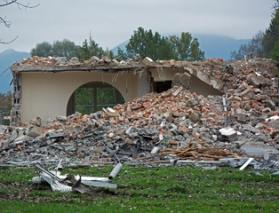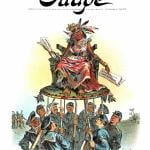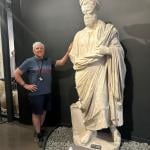Eric Metaxas summarizes some recent findings in Middle Eastern archaeology, ones that confirm not just isolated facts in the Bible but the “big picture” of the Biblical narrative:
Israeli archaeologists recently discovered a coin, dating from the 11th century before Christ. It depicted “a man with long hair fighting a large animal with a feline tail.” Ring any Old Testament bells?
The coin was found near the Sorek River, which was the border between the ancient Israelite and Philistine territories 3,100 years ago. Sound vaguely familiar?
The archaeologists thought so, too. While Shlomo Bunimovitz and Zvi Lederman of Tel Aviv University don’t claim that the figure depicted on the coin is proof that Samson actually existed, they do see the coin as proof that stories about a Samson-like man existed independently of the Bible.
Stated differently, the story of Samson was not the literary invention of a sixth-century B.C. scribe living in Babylon, as has commonly been assumed by mainstream biblical scholarship.
Bunimovitz and Lederman made another interesting discovery: the Philistine side of the river was littered with pig bones, while there were none on the Israelite side. . . .
The findings at Sorek are only the latest in a series of archaeological discoveries that are changing the way modern historians look at biblical narratives. It’s becoming more difficult for them to maintain that the narratives are pious fictions invented long after the era being depicted.
The most famous of these discoveries is the 1994 discovery of a stele in Tel Dan bearing an inscription that contained the words “House of David.” It was the first extra-biblical evidence of the Davidic dynasty. Prior to the discovery, many scholars doubted that David ever existed, much less founded a dynasty. The discovery was so out-of-line with expectations that more than a few insisted it must be a forgery.
Today, it is clear to even the most skeptical scholar that-surprise!-there really was a David who founded a ruling dynasty. That dynasty included his son, Solomon, and evidence of Solomon’s building projects described in Second Samuel have been found by archaeologists as well.
Some of the discoveries go beyond history and tell us about Israel’s sense of what it meant to be God’s chosen people. Sites dating to before the Exile are littered with Canaanite idols, evidence of the apostasy the prophets denounced and warned would lead to disaster.
Yet there has never been a single idol found in sites dating after the Exile. Clearly, the Jews who returned from the Exile had finally, truly learned that “the Lord our God is one.”
via Archaeology and the Bible.












